Our new house has a large basement, which Adam has claimed as his “Man Cave.” In the few weeks that we’ve been living here, we’ve quickly realized that we primarily use this space as our family lounge. We kick back and watch TV, and there’s a playroom nearby – it’s a great place for us to relax and hang out together. While we haven’t made any solid plans as to what to do with this space yet, we’re considering turning part of the basement into a theater room, complete with a wet bar and concessions area. We also envision entertaining our friends and family with games, movie nights, and more. What better project to kick off our basement plans than this DIY Giant Wall Scrabble® Game Board? I am totally geeking out over it!
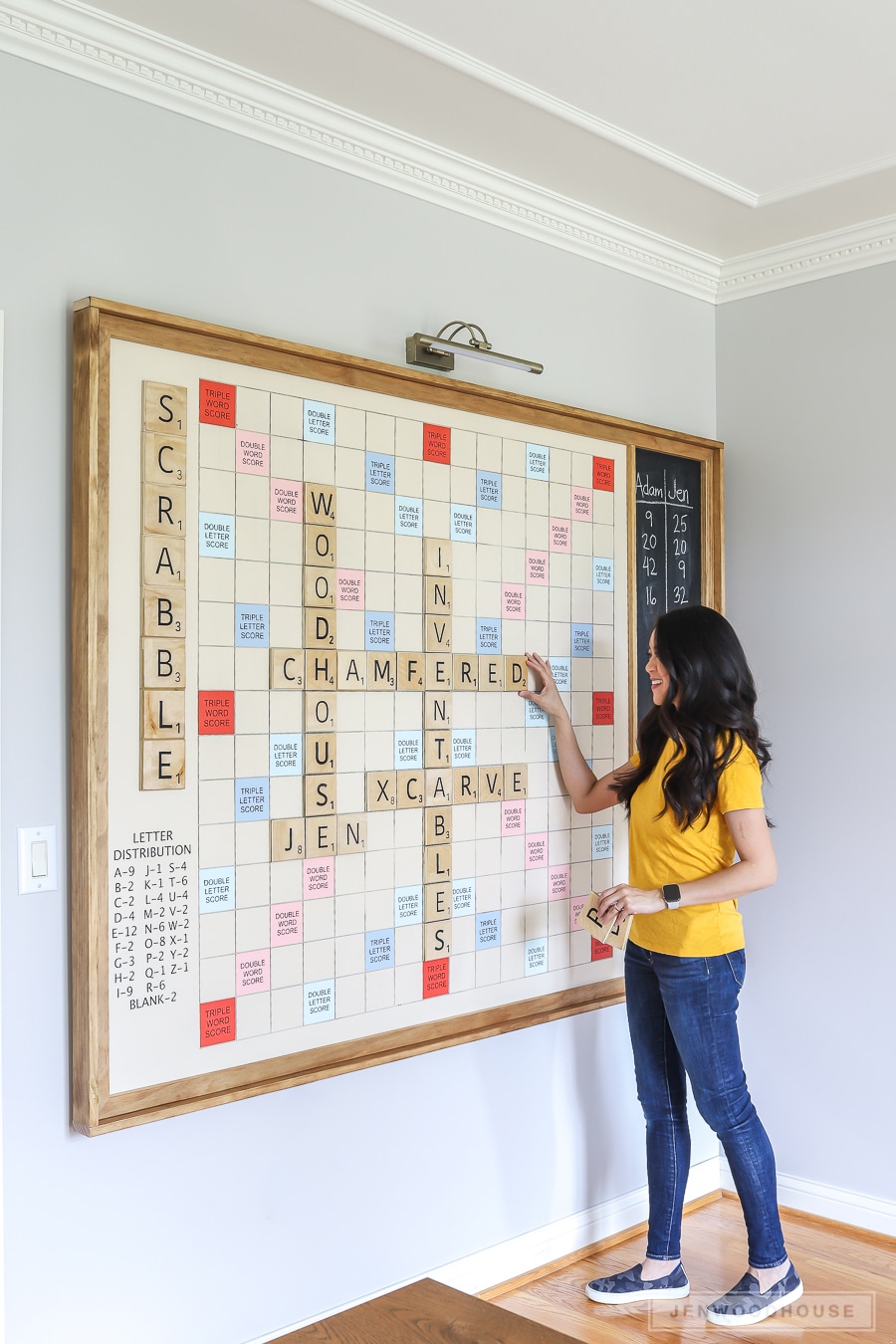
I’m excited to be partnering with the awesome folks at Inventables to bring you several fun projects this year! Did you catch my adorable baby name puzzle I made a few months ago? These little puzzles make great baby shower gifts!
When I was thinking of tackling this DIY Giant Wall Scrabble Game, I knew this was a job for my Inventables X-Carve 3D Carving Machine. This project was so much fun to make, but it’s incredibly time-consuming, so I don’t recommend taking it on unless you have a lot of time on your hands, like me. Ha!
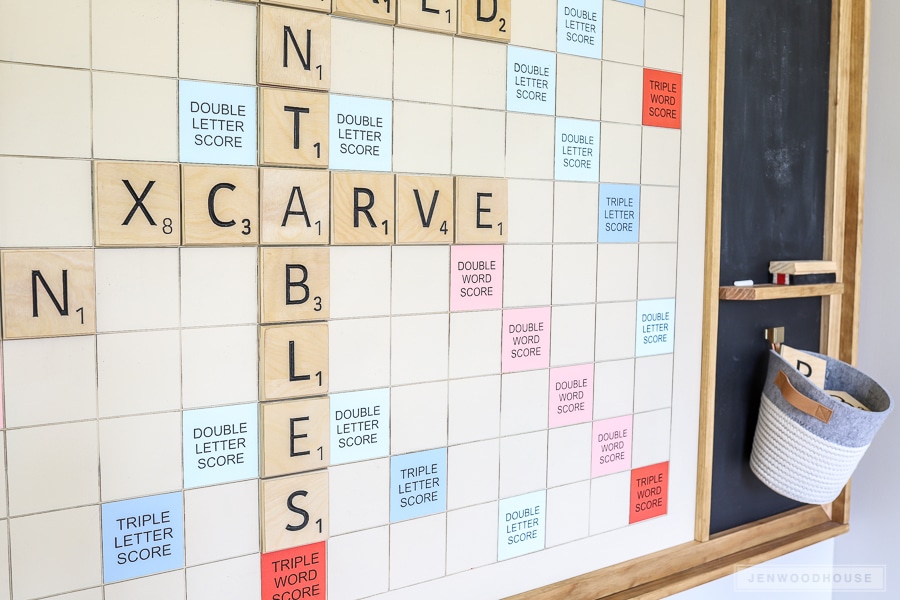
A quick Google search rendered this free SVG file for Scrabble tiles. I downloaded it from Hey, Let’s Make Stuff and it saved me a TON of time since I didn’t have to design the tiles from scratch. Thank you, Cori! I did modify the file a bit – I changed the size so that each tile was 3 1/2-inch square and then imported it into Easel (Inventables’ free design software) where I mapped out the tiles so that several tiles fit on four separate pieces of 23″ x 23″ 1/2-inch thick plywood. Here’s the file in Easel. After simulating the carve in Easel, I discovered that the 90º V-carve bit would give me the fastest and most precise cut. It took about 35-45 minutes to carve each plywood panel.
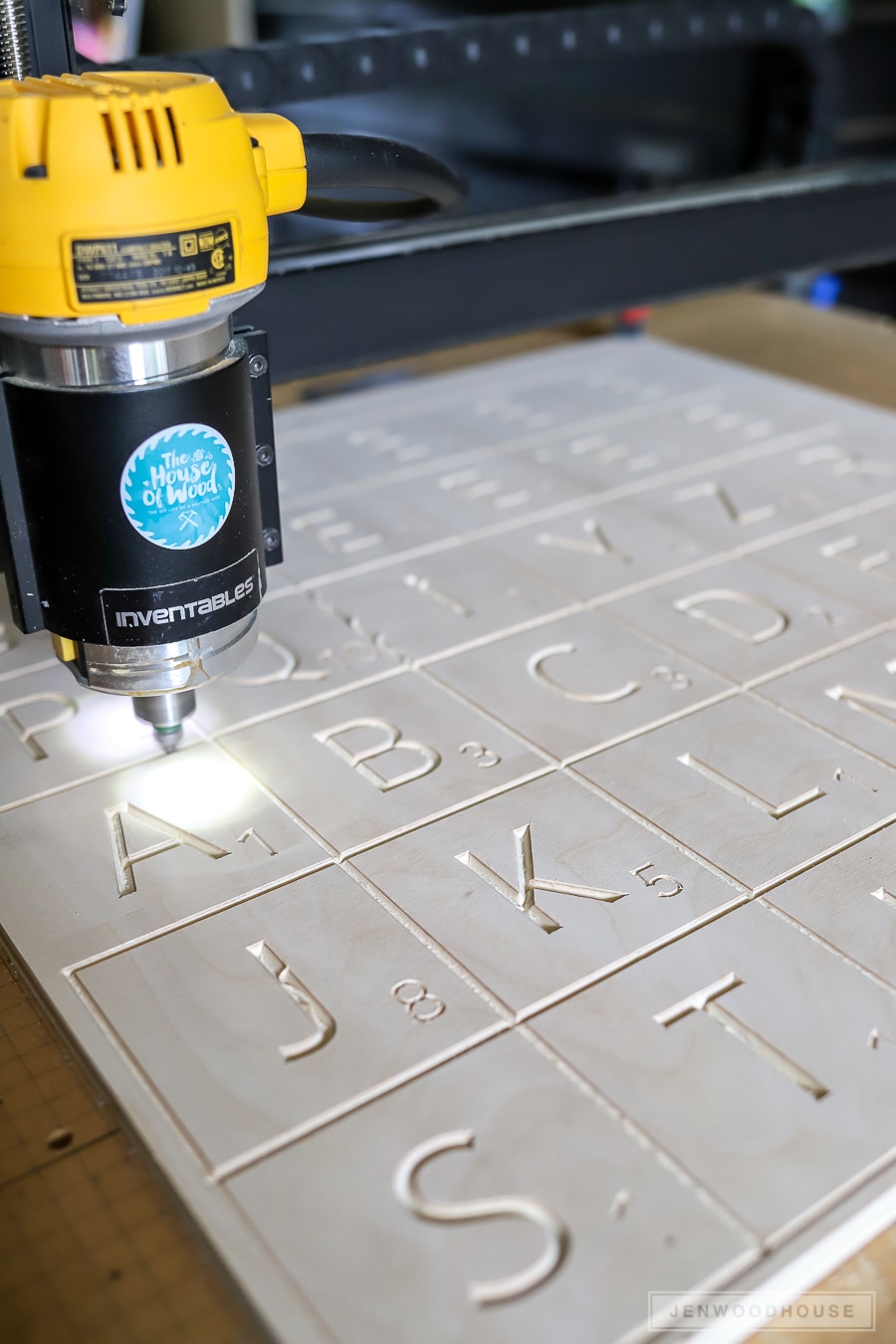
Tools and Materials:
- Inventables X-Carve 3D Carving Machine
- Table Saw
- Circular Saw
- Cordless Drill/Driver
- Compact Router
- (1) Full Sheet of 3/4-inch Plywood
- (1) Full Sheet of 1/2-inch Plywood
- (1) 1 x 12 x 8 Ft. Board
- (4) 1 x 3 x 8 Ft. Boards
- (4) 1 x 2 x 8 Ft. Boards
- (2) Quart Cans of Magnetic Primer
- Chalkboard Paint
- (100) Rare Earth Magnets
- French Cleat
- Giant Scrabble Tiles SVG File
- Bonus Tiles SVG File
Step 1: Carve the Scrabble Tiles
Instead of having the X-carve cut out the tiles individually, I set the cutting depth for the letters and numbers to 1/8″ deep and the box outline to 1/16″ deep. I’ll use the box outline as a guide make these cuts on the table saw to save time.

Step 2: Paint the Letters and Numbers
Once the carve was complete, I hand-painted the letters and numbers with black acrylic paint. Be sure NOT to dilute the paint – the water will seep into the wood fibers and you won’t be able to get a clean, crisp outline. You can’t even sand that out, unless you sand off a layer of the plywood. No bueno.
Ugh. I can’t even look at it.
Avert your eyes! Avert your eyes!
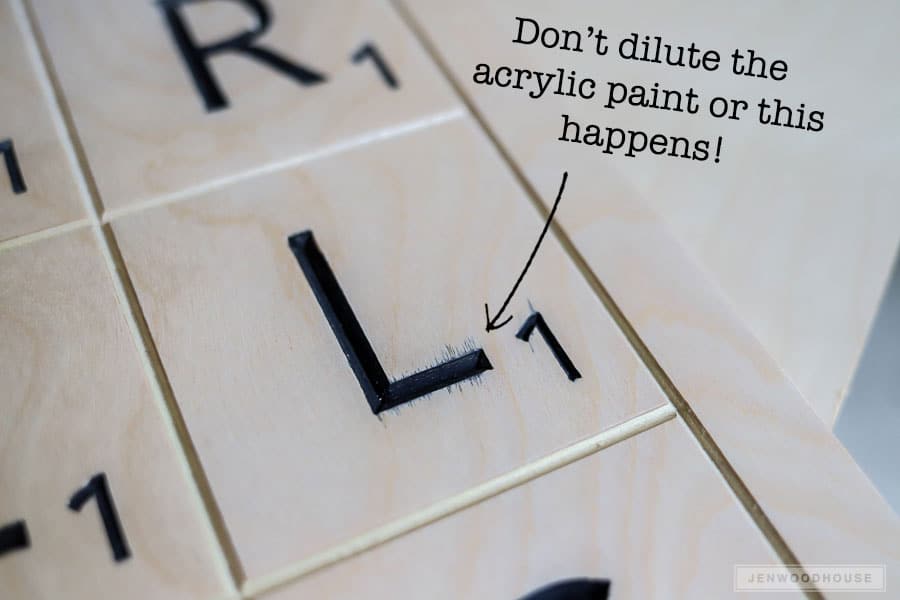
I ended up having to carve a whole new panel because I made that mistake. Take it from me – use a small paintbrush to paint the letters and numbers with acrylic paint straight from the bottle. And don’t worry about a messy job. In fact, my 6- and 8-year-old helped me with this task. As long as you don’t dilute the paint, you’ll be able to sand off the excess paint later on.
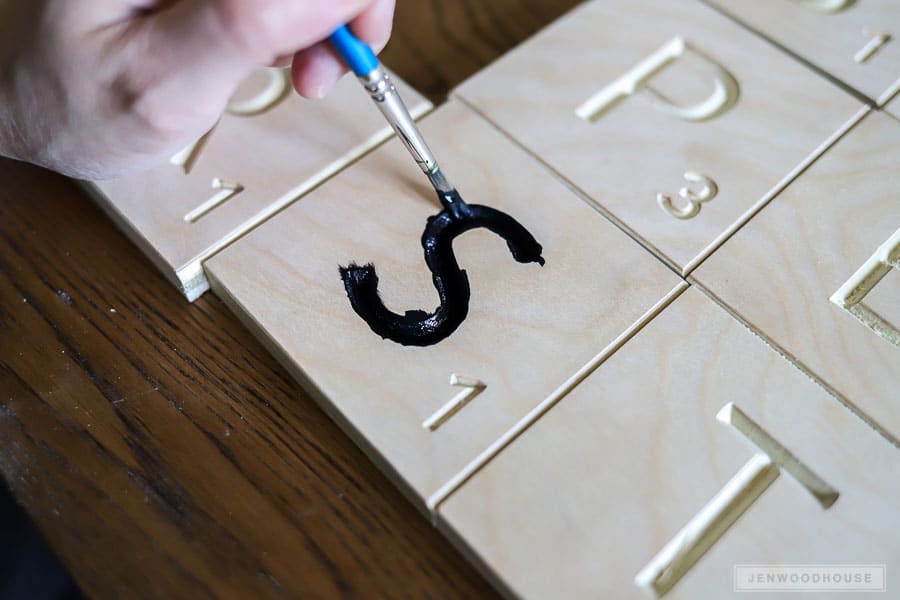
Step 3: Sand Excess Paint
Sand the excess paint off with 180-grit sandpaper and you’re left with a crisp, clean Scrabble tile:
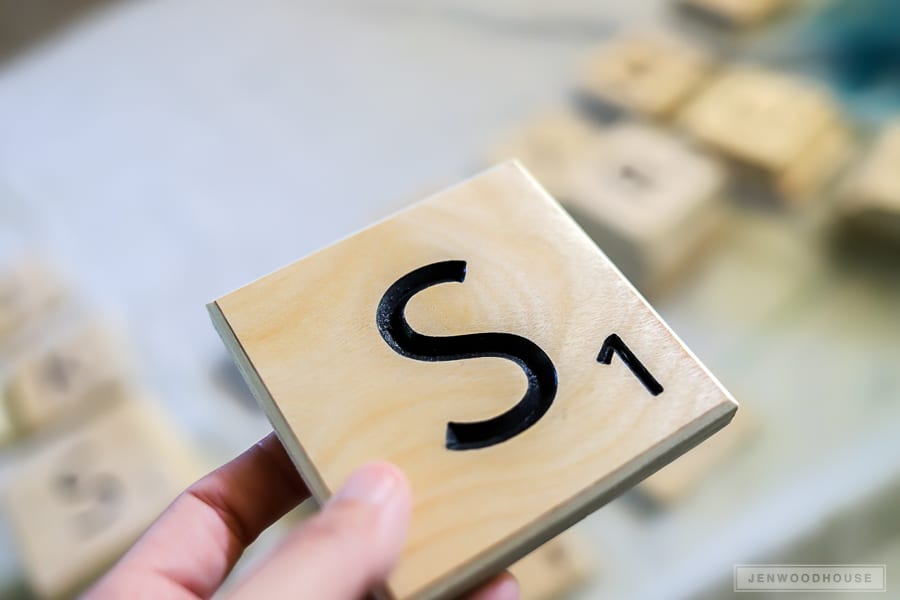
Ahhh… much better. I can go on living.
Also worth mentioning – be sure to paint the tiles and sand the excess paint off BEFORE you slice them up. It’s so much easier to sand a large panel, rather than try to hold onto a 3 1/2-inch square while sanding. Don’t ask me how I know.
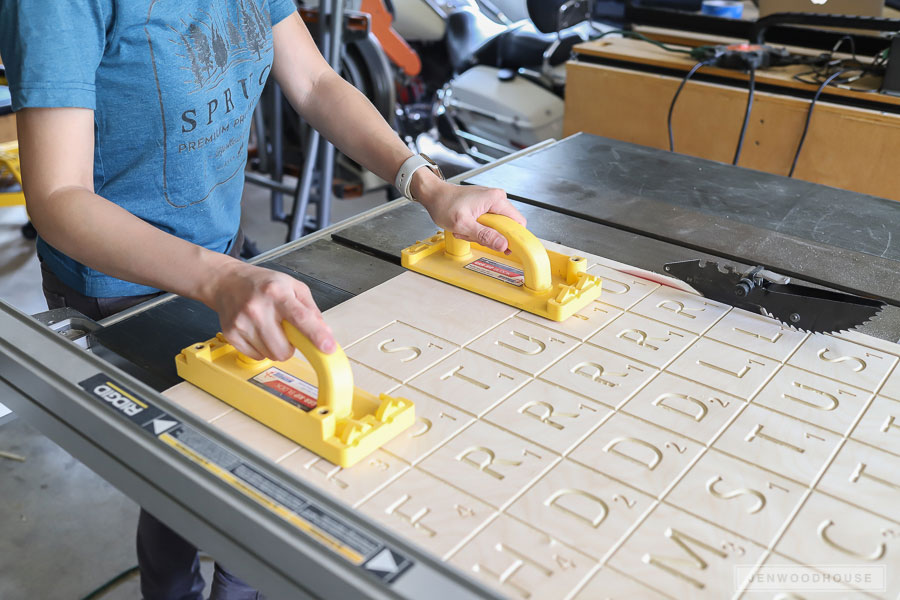
Step 4: Cut the Tiles Lengthwise
After the tiles have been painted and sanded, use a table saw to slice up the tiles lengthwise.
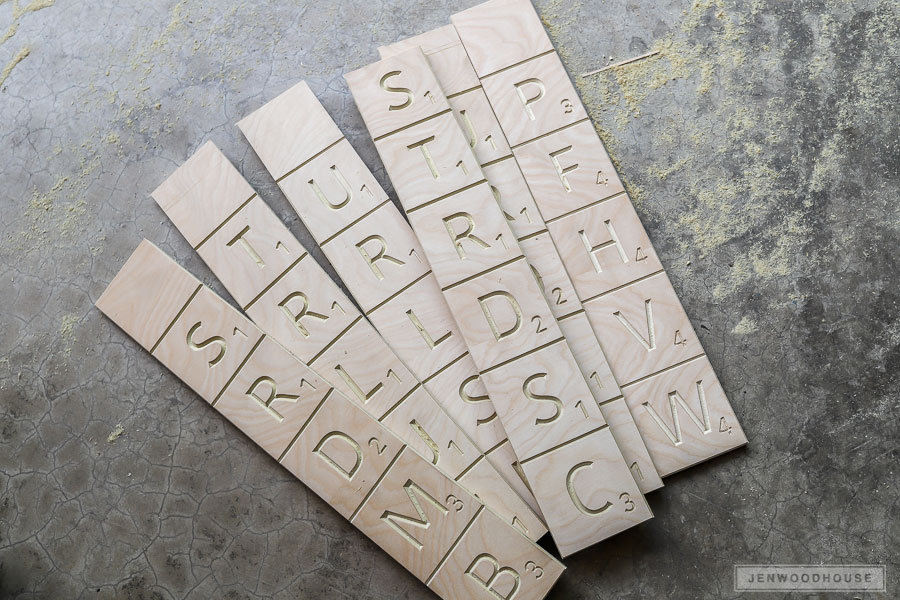
Step 5: Cross-cut the Tiles
Then chop them up into individual Scrabble tiles on the miter saw.
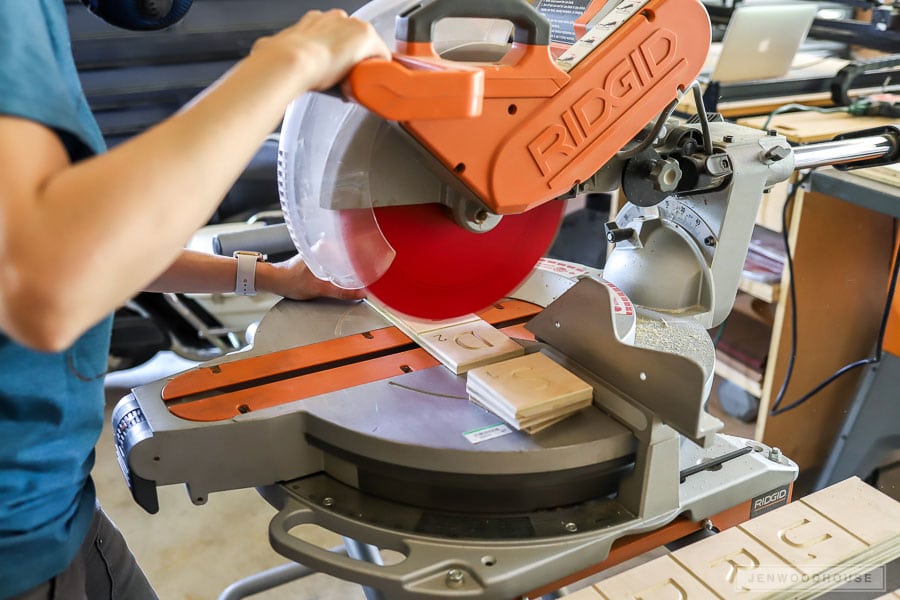
Step 6: Sand edges
Next, I used a bench sander to sand all the edges and sometime in a moment of lunacy, I decided that these tiles needed a chamfered edge on them. It would’ve been easier to have the X-carve cut the chamfer, especially with the 90º V-carve bit, but hindsight is 20/20, folks. And so I chamfered each edge of each tile by hand on the bench sander… 100 tiles x 4 edges = pure insanity.
Apparently, I enjoy over-complicating things and creating extra work for myself as a result. It’s a gift.

After the dust settled, I was left with 100+ beautifully chamfered and carved Scrabble tiles.
Was it worth it?
Ask me again when we’re knee-deep in a highly competitive Scrabble match and “chamfered” is the winning word. Twenty points to Gryffindor!
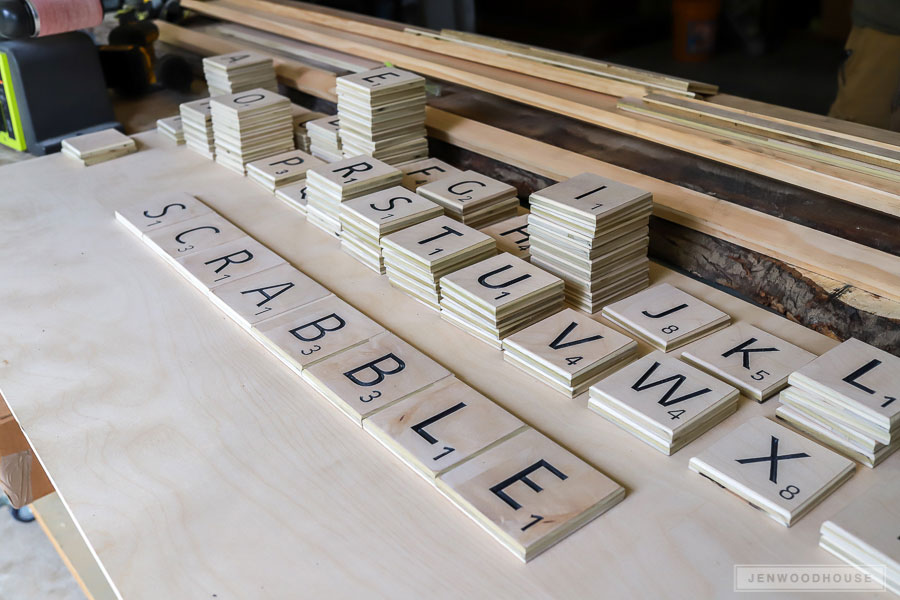
Step 7: Finish Tiles with a clear top coat
Finally, I sprayed a couple of coats of gloss lacquer on the Scrabble tiles and called it a day. Despite the strong odor, I really love using this spray lacquer because it dries quickly and is so easy to apply. After the tiles dried, they felt a little rough to the touch, so I hand-sanded each tile with a 400-grit sanding sponge.
Another tip – I always get glossy spray lacquer (as opposed to satin, semi-gloss, or matte finish) because once you sand that top coat, the gloss is dulled to a satin finish anyway.
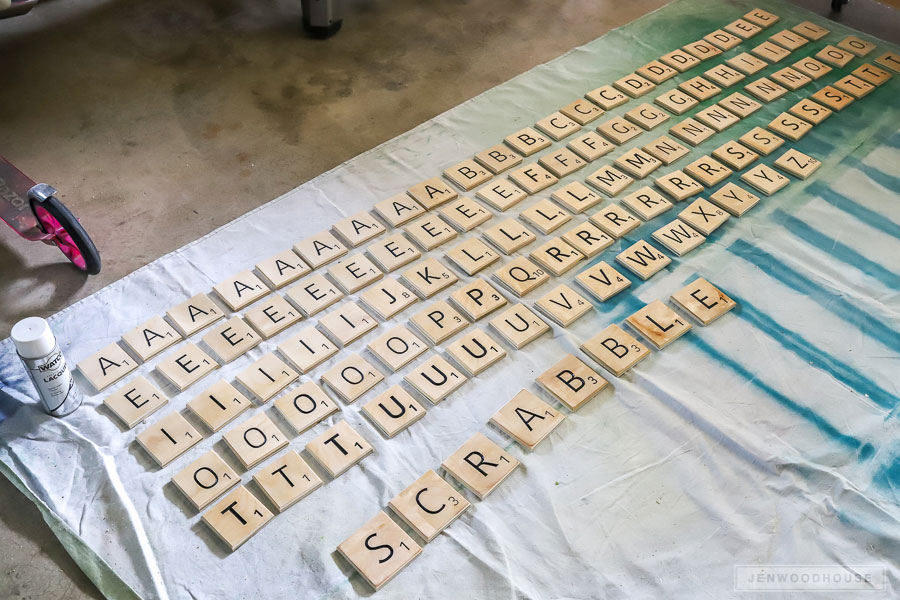
The prettiest P you ever did see! Check out those clean, crisp lines and beautiful wood grain!
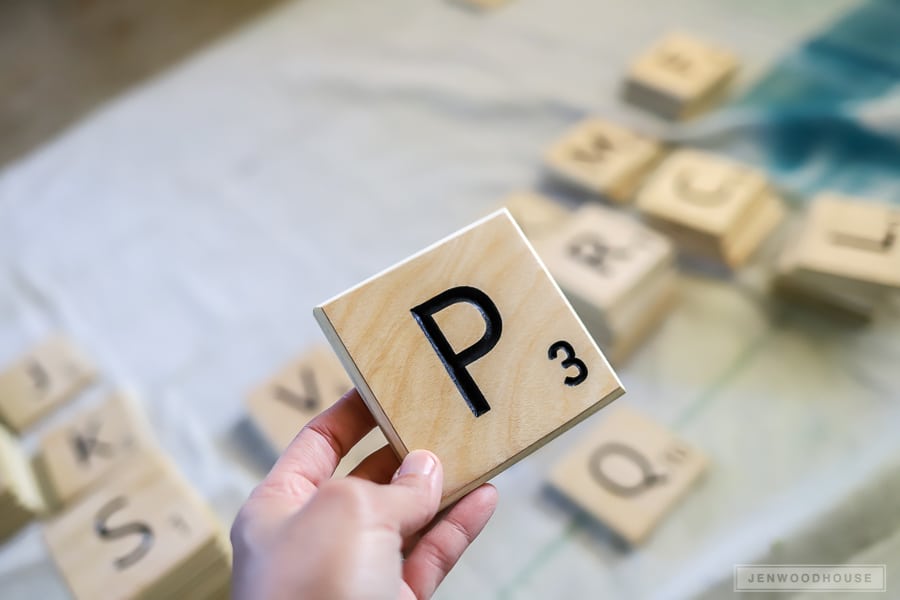
Step 8: Drill holes for magnets
Because I wanted the tiles to sit flush to the game board, I used my drill press to drill holes into the back of each tile so that I could inset the magnets. If you don’t mind the game pieces sitting proud on the game board, feel free to skip this step and just glue the magnets to the back of the tiles. But I’m a crazy person who likes to over-complicate things, remember? We talked about this.
CASE. IN. POINT.
But I was feeling pretty clever when I found a new use for my welding magnets. Instead of building a jig, I set my welding magnets up so that I could slide each tile into place and drill in the exact location every time. All 400 holes of them!
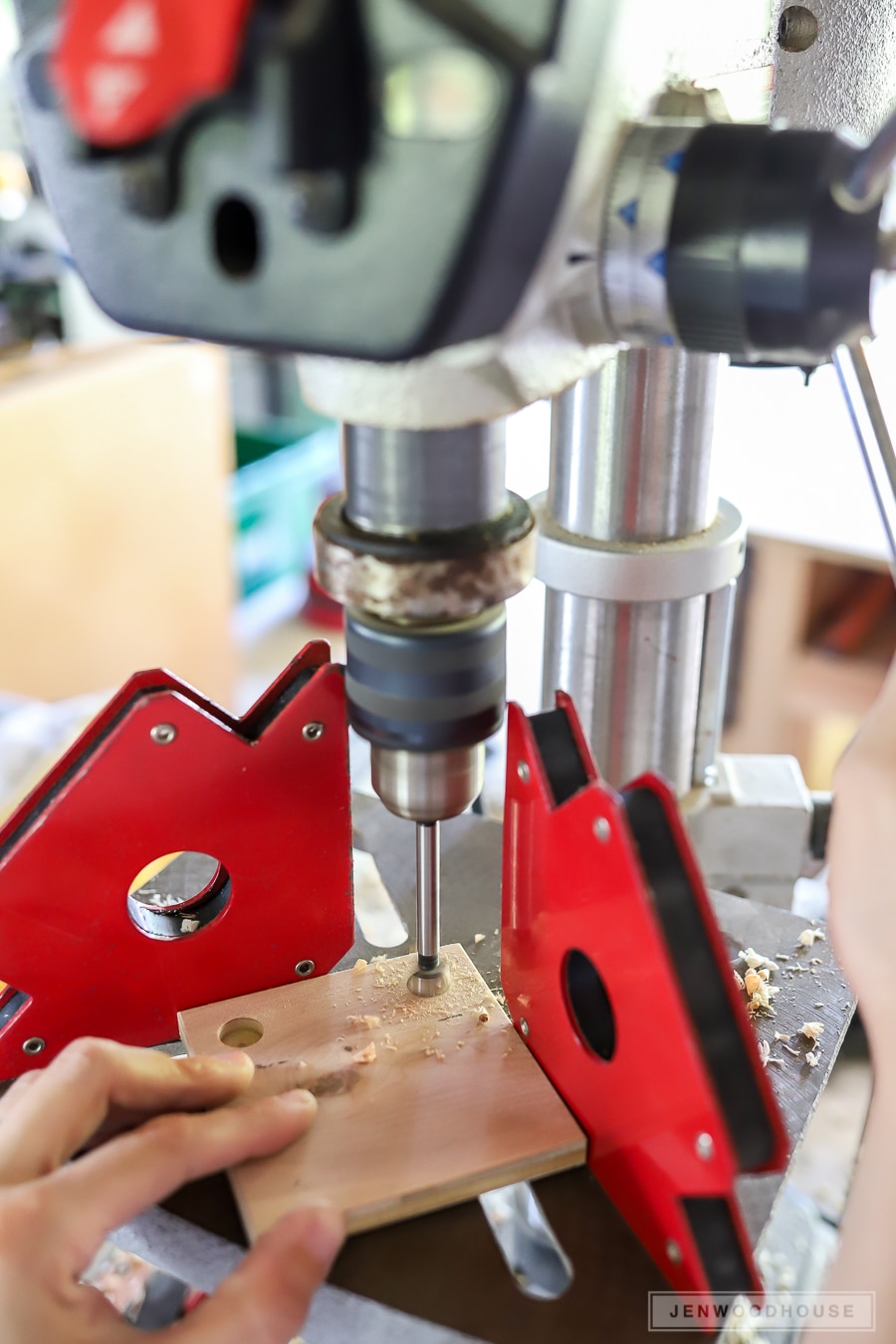
Four hundred holes later, I glued the 1/2-inch ceramic magnets in. This was another mistake – after reading the instructions on the can, Rust-Oleum recommends using rare earth magnets with their magnetic primer. Doh! You’ll get a stronger magnetic bond with the rare earth magnets. I ended up filling 2 of the 4 holes on the back of each tile and attaching 2 rare earth magnets to the back. Then, I discovered that some of the tiles still didn’t stick to the Scrabble board very well, so I went back and added these bigger magnets to the back of each tile.
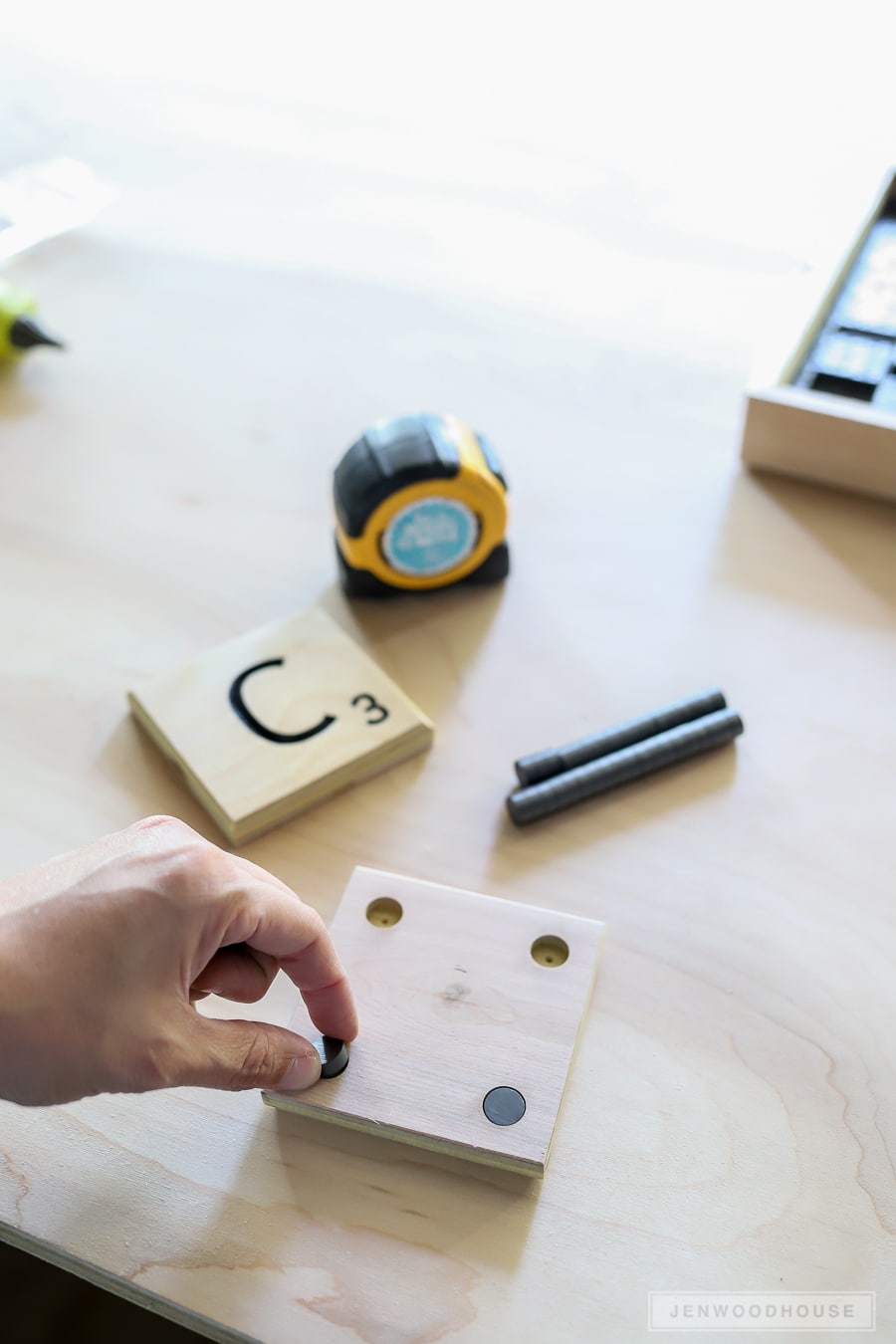
Step 9: Attach the 1×12 and cut game board to size
Because a full sheet of plywood is 96 inches x 48 inches, I had to make it larger in order to accommodate the 220 tile spaces. The original Scrabble board is made up of 15 by 15 spaces (220 spaces total) and with 3 1/2-inch Scrabble tiles, the playing area needs to be at least 52 1/2 inches square. I grabbed a 1×12 board and edge-joined it to the plywood, hiding the pocket holes on the back of the plywood. Then I flipped the whole thing over, filled the seam with wood filler, and sanded everything flat. Now I had a full game board that measures 80 inches x 59 inches. The extra area will be for the chalkboard.

Step 10: Paint the plywood with magnetic primer and chalkboard paint
Rust-Oleum recommends 3 coats when using their magnetic primer and for an area this large, I ended up using two quart-size cans. When you open up the can, the paint is super gloopy (that’s a technical term), so you’ll have to stir it until it’s an even consistency. This will take several minutes – don’t lose heart and just keep stirring. The gloop will incorporate. Trust. I used a dense foam roller to roll on the paint. I waited about 30 minutes between coats and rolled on 3 coats, as recommended.
Quick tip: line the paint tray with aluminum foil to make clean-up a piece of cake.
Great.
Now I want cake.
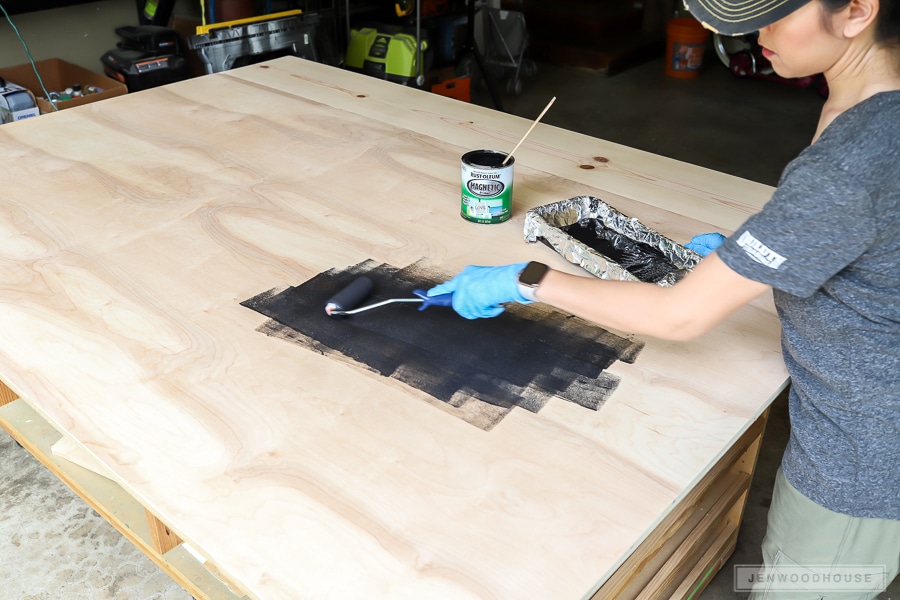
Step 11: Use a straight edge and mark the gridlines
I used a straight edge to pencil in the grid. Each square measures 3 1/2 inches x 3 1/2 inches. This step isn’t actually necessary. You could just measure 3 1/2 inches for each square, mark the two ends and clamp a straight edge to act as a fence for your router. But again, I’m an expert at working harder and not smarter, remember? But this is good news for you – I’ve made all the mistakes for you, so you don’t have to! You are welcome.
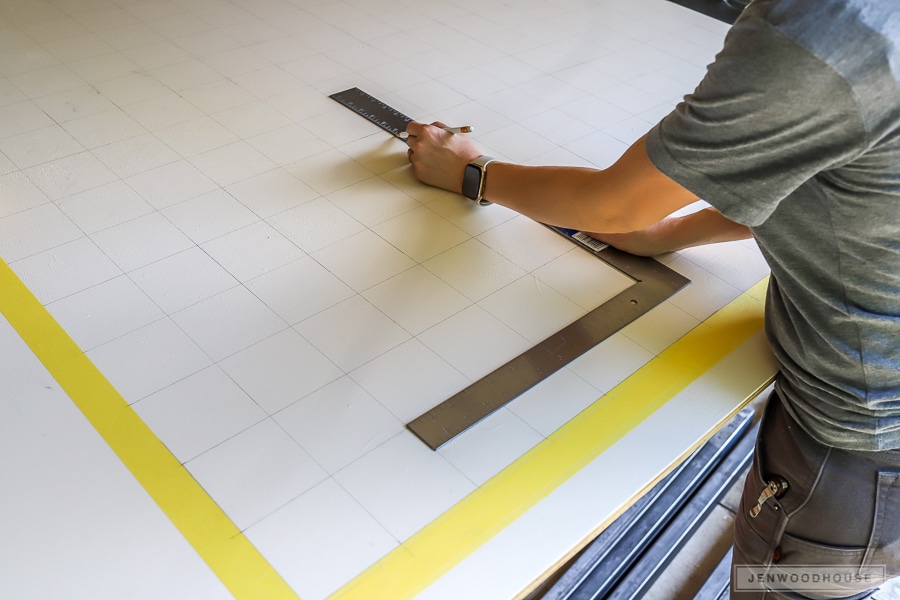
Step 12: Route the gridlines
I routed the grid with this corded router and after a few snafus with the power cord, I really wished I would have had this cordless compact router instead. It took me about 2 hours to route the entire grid. Whew! I used a V-bit and routed the grooves about 1/16 inches deep.

Step 13: Paint the scrabble board
Here’s another instance where hindsight is 20/20… I wish I would have painted the plywood after I routed the grid because it got pretty dirty and scuffed as I was working. So, do as I say, not as I do. Route first, then paint.
These are the latex paint colors I used in a satin sheen:
- Background: Malton (BM 1073)
- Double Letter Tiles: Crystal Springs (BM 764)
- Double Word Tiles: Smashing Pink (BM 1303)
- Triple Letter Tiles: Sapphire Ice (BM 808)
- Triple Word Tiles: Habanero Pepper (BM 1306)
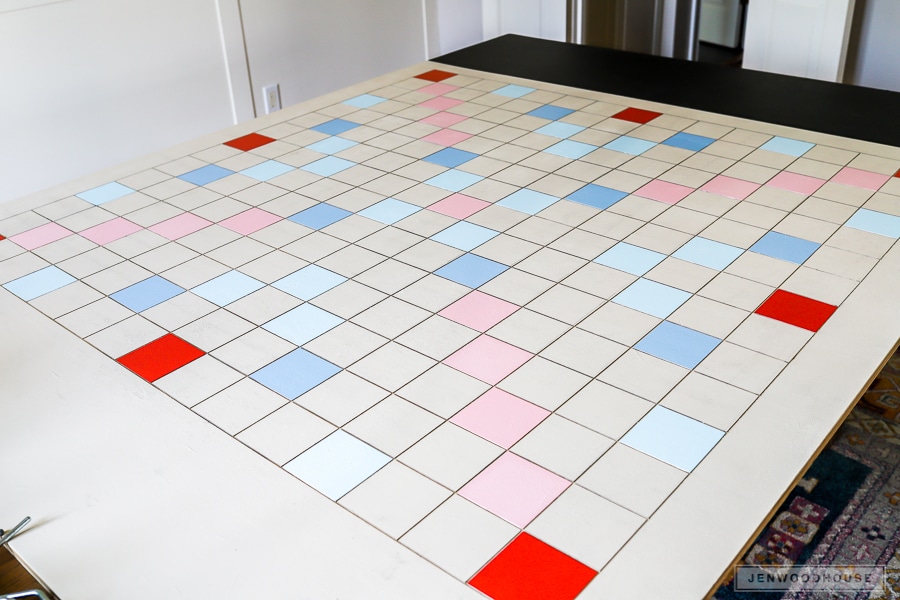
After the paint dried, I stenciled the text onto the bonus tiles. Prepare yourself for a very long evening. Put on your favorite TV series and stencil your little heart out.
>>> Download the stencil for the bonus tiles <<<
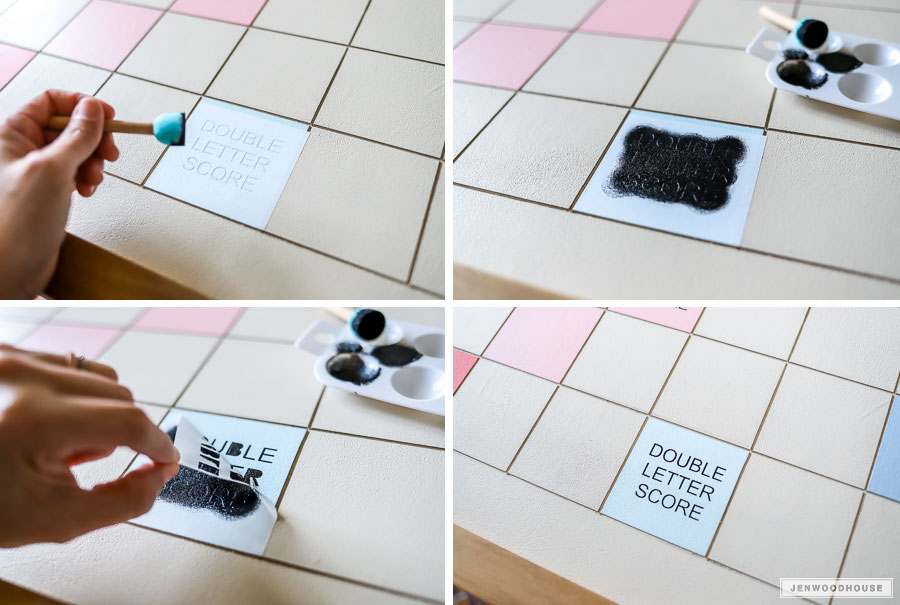
Step 14: Add the ledge and frame
Now that the most meticulous parts are done, it’s time to wrap this project up. Let’s add the ledge (stained Golden Oak) and frame out the entire thing. Measure, mark, cut, and attach the boards with wood glue and brad nails. I hung a cute little basket right under the ledge to hold extra tiles and other miscellaneous items. Finally, we used a French cleat to hang the Scrabble board up on the wall.
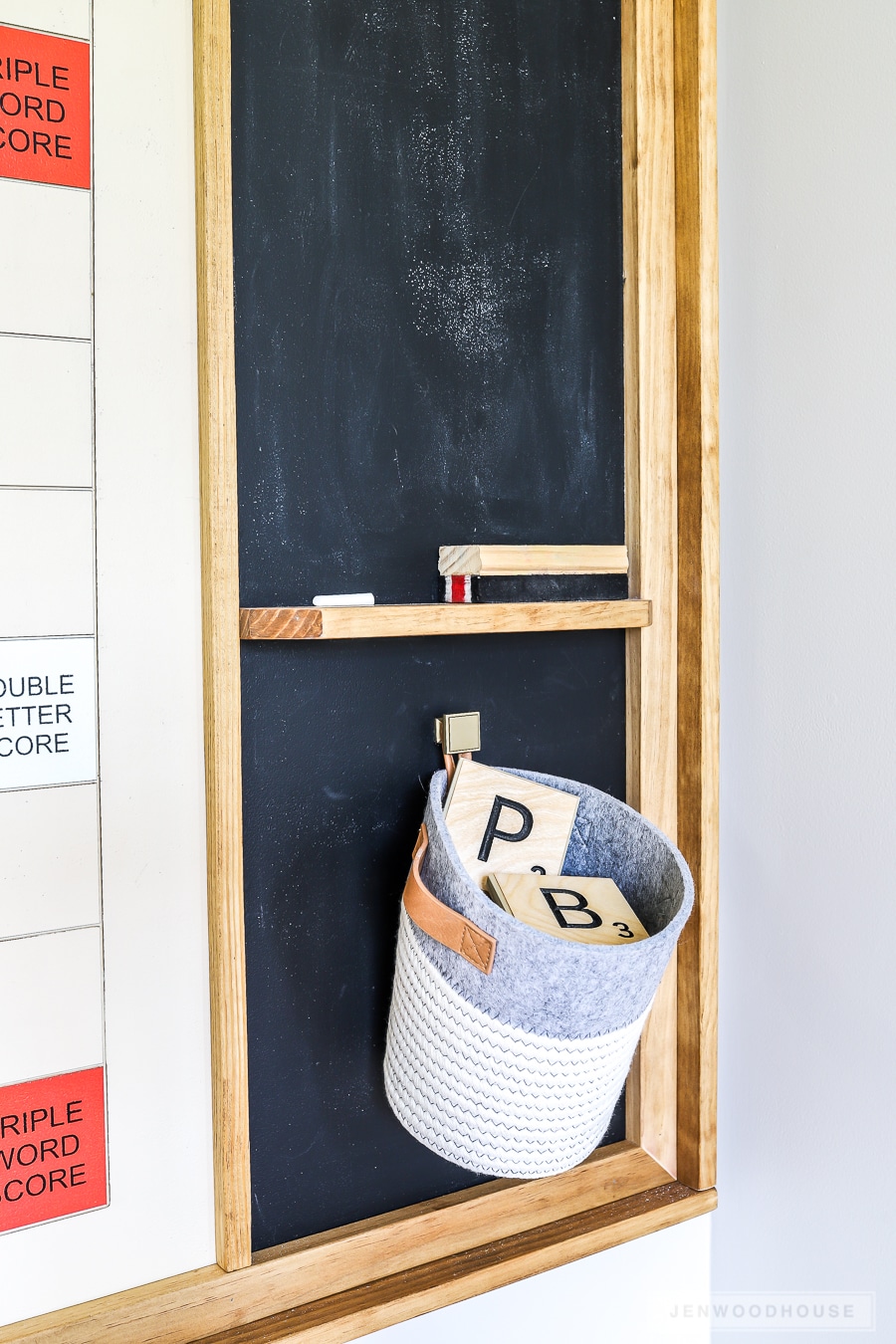
Now that it’s done, I can think of better ways to make this DIY Giant Scrabble Game Board. For example, instead of hand-routing the entire board, I could have divided up the game board into nine equal parts with each panel made up of 5×5 squares. That way, each panel would be small enough for the X-carve to carve and I wouldn’t have had to stencil all of the bonus tiles by hand. But it’s done and even though it did take me about 15 years to complete, we absolutely LOVE how it turned out!
Now then. Who’s up for a game of Scrabble?
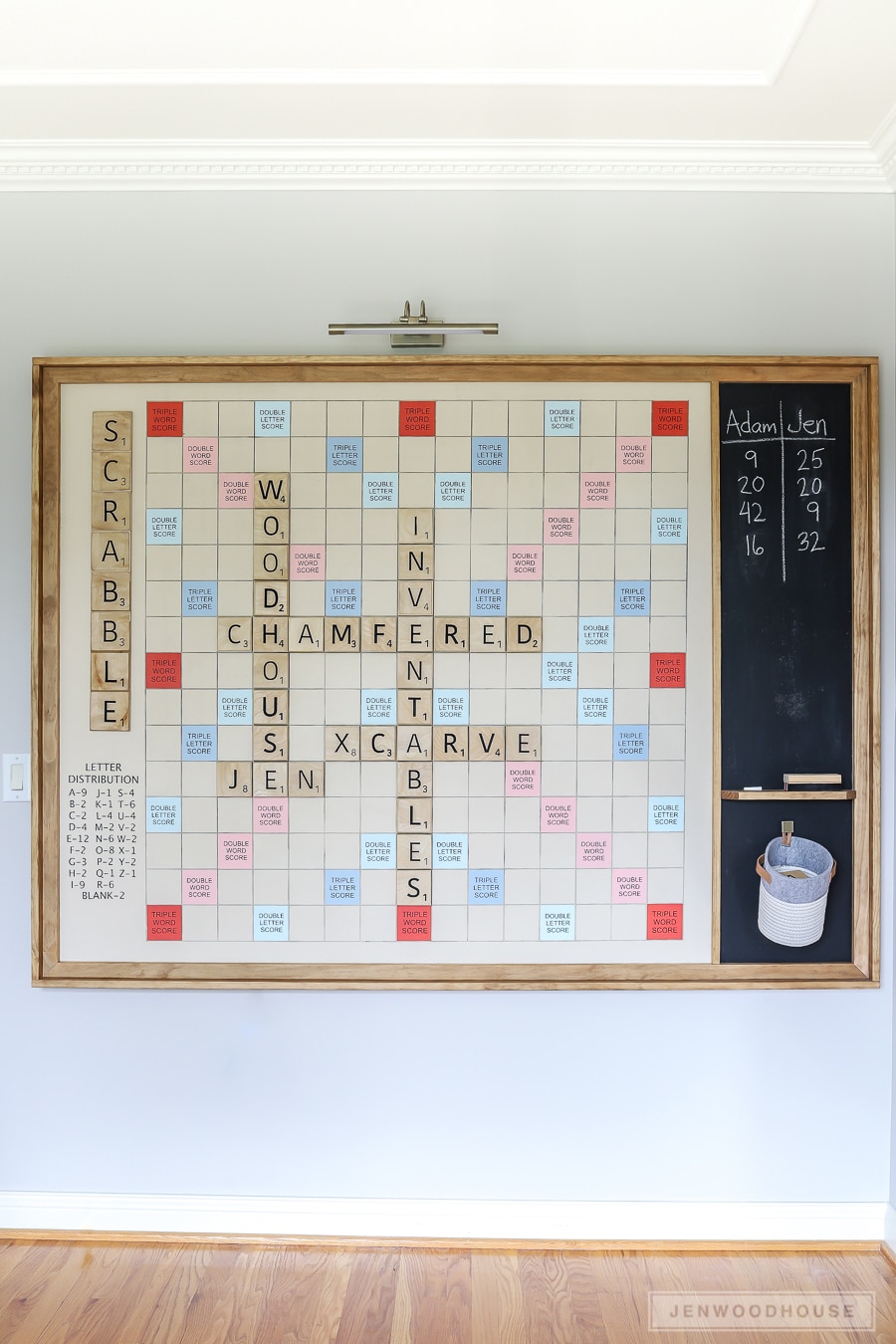
*This post is sponsored by Inventables and contains affiliate links. To read my full disclosure policy, please click here.
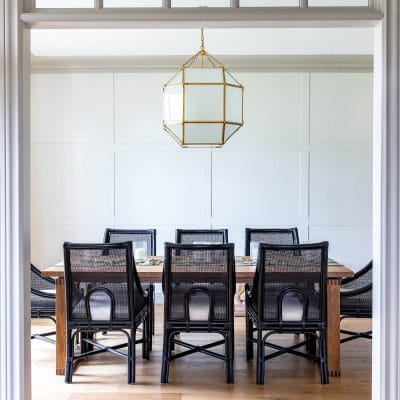


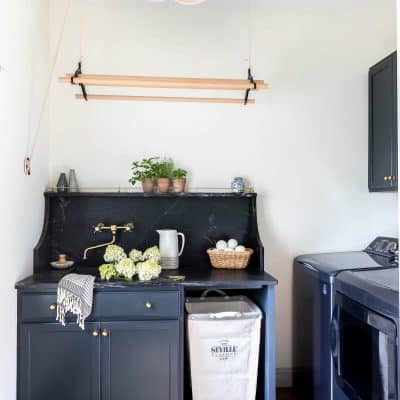
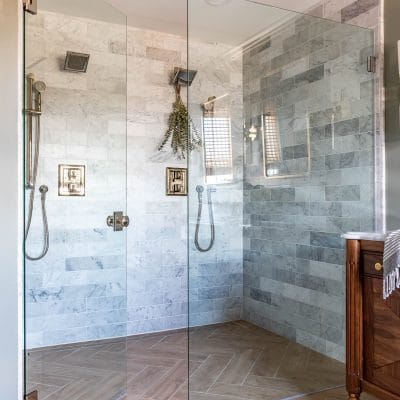

Hi There!
I love the idea of this project for a gift. I’d love to make this for my mom. Is there a printer-friendly option to print out the steps of this project?
This is beautiful but not really DIY. You guys look like pros and who has those tools yeah definitely not DIY.
Awesome. Just maybe change title. To hand crafted enormous scrabble wall game; one of a kind.
It’s amazing !
Thanks for the compliments, Barb. I’m definitely not a pro! If you don’t have the X-carve, you can most certainly paint the tiles, as opposed to carve them. There are other options that will achieve a similar result!
I know this was asked before but didn’t see that there was an answer. What is the approx cost of materials? (Assuming we have all those fancy cutting tools.) Thanks!
Hi Christina,
Cost of materials will vary based on location and availability. There is a list of materials in the post so folks can price them out more accurately. Hope that helps!
Absolutely beautiful. What type of plywood did you use for the tiles? Birch, maple, oak? Also what type of wood did you use for the frame? Poplar, pine, maple? Additionally, how many coats of chalk paint were needed after the 3 coats of magnetic primer?
Hi Lisa,
All great questions! I believe the plywood was either birch or maple. Oak tends to be pricier, and because I painted it, the grain pattern and tone didn’t matter (no use spending more money than necessary). I believe the frame is poplar or pine. I painted a couple coats of the chalkboard paint on. Hope that helps!
Thanks so much for your Quick response. You are so inspiring. Did you apply a clear coat over the painted scrabble board?
Hi Lisa,
No, there’s no clear topcoat. The paint is durable enough!
I so appreciate your quick and helpful replies. Did you use 1/2” or 3/4” for the playing board? And for the it side frame, is that 1×2 or 1×3 Boards? It’s hard to tell in the pictures which pieces were used for the inside and outside frames.
Thank you so much for your quick and helpful response. For the scrabble board, did you use 1/2″ or 3/4″ plywood. Also, for the outside frame, is that 1×3 or 1×2. From the pictures, it’s little hard to tell the inside and outside frame widths and depths.
Great project. Wondering how much does the game board weigh and what did you use to fasten it to the wall?
Hi David,
I would guesstimate the game board weighs maybe 50 pounds? We used a French cleat to hang it on the wall.
Thanks for the quick reply. Pictures and the tutorial are great, really look forward to trying this project.
Jen,
I just read your project story of the DIY giant Scrabble board. I am not a woodworker, nor creative in any way. I would never have the patience for that sort of project. (I do have my own pursuits that I find fulfilling).
I wanted to say how much I enjoyed your writeup. Your sense of humor, your warm self acceptance and your efficient writing style all add up to a great story, even if I won’t ever build the project described therein.
I am reminded of the many talents and personality we are each created with and of the wonderful gift it is to be a member of the human race. And I am inspired to get off the couch and tackle a couple of the projects on MY OWN DIY list.
Thank you!
Dale
Hi Dale,
Wow, thank you so much for your thoughtful comment! It made my day. And thanks for reading!
Jen
Very nice project. I sincerely apprciate you going over the lessons learned from your mistakes. Myself, I have always wanted to buy an XCARVE, but just haven’t pulled the plug yet. Any lessons learned on that tool?
Mike
thank you for sharing this great tutorial on DIY Giant Wall Scrabble Game Board. I have enough space for it in my house. I think it would be fun to make it with my kids. It’s a really great idea!
Wow, very impressed and very interested in making one. How many hours roughly would you say it took you? Knowing full well that it’ll take me 2-3 times as long.
15 years and one quarantine later I am almost done with my board!!! I am using 1/4” boards that I laser cut with a dremel digilab so a bit different but I like it. My husband also had the idea of instead of using rare earth magnets to use sticky magnetic sheets cut to the size. A lot cheaper, looks really clean and it worked!! I should listen to him more;)
Awesome, Gretchen! And great idea on the magnetic sheets! We’d love for you to share your project when you’re done: https://jenwoodhouse.com/share-your-project
do you have names of anyone that would be willing to make one of these for us? i am not able to do this myself. Price, basically, would be no issue. the only thing is that the wall I would like to hang this on cannot hold anything larger than 75″ wide. And I would use a white board rather than chalk board. I love your post!!
Thank you,
Great article.
Sam S
Has anyone made this and want to sell??
Can you post a picture of what the back of the tiles look like after you added the additional magnet? Are the 4 smaller magnets even necessary or do you think the larger one does the trick?
Did you use the X-Carve to do the double word score?
I am making this project for my wife for the holidays. For anyone looking to do this project, do NOT use the magnetic paint. It is not consistent enough and the letters slide. I used 3 coats as per the directions but the letters still slide. I am having to carve out pockets behind each letter to glue in a magnet to keep the letters in place. An additional problem with the magnetic paint is that it is so thick and it does not dry smooth.
Thanks for your input, Eric. Are you using the rare earth magnets on the back of the tiles, as I suggest? I haven’t had any issues with the tiles sliding once I switched out the magnets. Yes, the paint is very thick which is why I mention having to stir it VERY well before application. The finish on my board is smooth.
This was an epic project!! Well Done!
I made one, though slightly smaller, non-magnetic table top version for the Kids ‘N’ Stuff Children’s Museum, in Albion MI, about a decade ago. I made the tiles rectangular and small enough (3″ x 2.5″) so kids could grab them easily. I did not have a X-Carve, so used a CriCut and adhesive vinyl for the letters., then sealed with water based urethane. and I made the mistake of cutting prior to sanding, so can attest to the challenge of 100 tiles individually.
If you have to make letters, I would recommend sanding sealer application prior to painting, or urethane prior to paint, then after painting and sanding, a second and third coat of urethane.
I am so impressed with all your projects!! I still do not have a 3D router…. Thanks for creating this creative community!!
What size router bit did you use to get such sharp corners on the letters and numbers?
Is there a way to do this project if you don’t have the carving machine? Would love to do this, but the machine is a bit out of my price range. Thanks!
Yes! You can just use paint instead of engraving!
I am attempting to make this now. I am not going to spend the money on an X Carve machine, so I used a silhouette machine and cut vinyl letters for the pieces then sprayed high gloss clear coat over them. They look great and it is really quick.
That is VERY cool! 😍